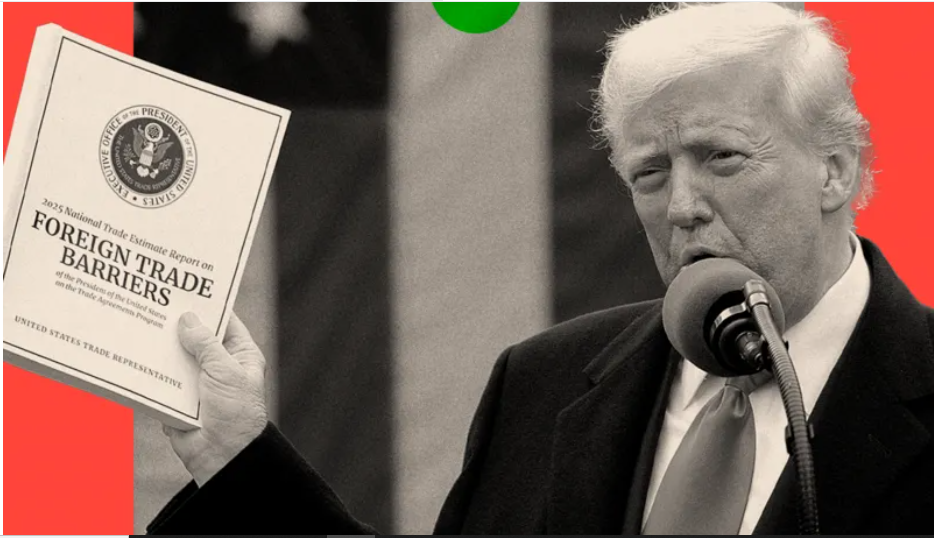Summary: Trump officials rally around tariffs following bumpy rollout
Authorities emphasize leverage with other countries
Lutnick explains penguin island targeted purposely
Taiwan, India and Israel pursue deals
Over 50 countries have approached the White House to initiate trade negotiations since the U.S.
President Donald Trump unveiled sweeping new tariffs, senior officials said on Sunday while defending tariffs that erased almost $6 trillion of value from U.S. equities last week and played down economic damage.

Image Courtesy: BBC
On the morning talk shows on Sunday, Trump officials, like senior economic advisers, tried to package the tariffs as a clever repositioning of the U.S. in the international trade system.
How Trump Officials downplayed the game
They also tried to downplay the economic shocks from the volatile rollout last week, as a bumpy Monday was expected for Asian stock markets.
Treasury Secretary Scott Bessent indicated over 50 countries had begun to negotiate with the U.S. since last Wednesday’s announcement, leaving Trump in a strong position.
Neither Bessent nor the other mentioned the countries or provided details of the negotiations.
But negotiating with several countries at the same time may become a logistical nightmare for the Trump administration and extend economic unreliability.
Bessent diverted the stock market decline and stated there was “no reason” to anticipate a recession based on the tariffs, referencing stronger-than-projected U.S. jobs growth.
Trump shocked economies globally following the announcement of sweeping tariffs on U.S. imports by him, prompting counter-retaliation levies from China and a prediction of a world trade war and recession.
JPMorgan economists now foresee the tariffs will cause full-year U.S. gross domestic product to fall 0.3%, from an initial estimate of 1.3% growth, and unemployment to rise to 5.3% from 4.2% currently.
While investors were preparing for the opening of Asian stock markets, Republican President Trump spent the weekend in Florida, golfing and sharing a video of his swing on social media on Sunday.
TARIFF DEALMAKING
American customs officers started charging Trump’s one-sided 10% tariff on most imports from a number of nations on Saturday.
Also Read: Defiant Trump officials vow to stay course as countries scramble over tariffs
Higher “reciprocal” tariff rates between 11% and 50% on individual nations are to come into force on Wednesday at 12:01 a.m. EDT (4:01 a.m. GMT).
Already, some nations have indicated willingness to negotiate with the U.S. to ward off the charges.
Taiwanese President Lai Ching-te on Sunday put forward zero tariffs as the platform for negotiations with the U.S., promising to lift trade restrictions and stating that Taiwanese businesses will increase their U.S. investments.
Israeli Prime Minister Benjamin Netanyahu stated that he would request a waiver of a 17% tariff on the nation’s exports during a scheduled meeting with Trump on Monday.
One Indian government official told Reuters that the nation will not retaliate against a 26% tariff and that negotiations were ongoing with the U.S. on a potential agreement.
Related: What tariffs has Trump just announced?
In Italy, Trump ally Prime Minister Giorgia Meloni promised on Sunday to protect companies that suffered harm from an upcoming 20% tariff on EU goods.
Italian winemakers and U.S. importers in a wine show in Verona on Sunday reported that business had already decreased and were worried about further damage.
NO PLAN TO CRASH STOCK MARKET
Tariff-shocked markets enter another week of possible chaos following the worst week for U.S. stocks since the start of the COVID-19 pandemic five years ago.
The S&P 1500 Composite Index, one of the broadest measures of the U.S. market, shed almost $6 trillion in value in the two days following Trump’s declaration and has lost nearly $10 trillion since mid-February, a huge hit to the retirement nest eggs of millions of Americans.
White House economic advisor Kevin Hassett ruled out the tariffs as a Trump plan to tank financial markets in order to push the U.S.
Federal Reserve to lower interest rates. There would be no “political coercion” of the central bank, he added.
In a Truth Social message on Friday, Trump posted a video that implied that his tariffs were intended to bash the stock market intentionally in an effort to push lower interest rates.
The tweet incited worldwide furor on whether Trump’s tariffs were one element of an eternal new tariff system or the tool of bargain that would be reduced by cuts through concessions of other countries.
Commerce Secretary Howard Lutnick indicated on CBS News’ ‘Face the Nation’ that they might be the latter, stating the tariffs would stick around “for days and weeks.”
The methodology employed to calculate the tariffs was put in the spotlight last week when they were imposed on uninhabited Antarctic islands inhabited by penguins and other small, isolated locations.
Lutnick said that it was an equitable solution so it could not be exploited as a channel for circumvention of tariffs by larger nations.
“Basically (Trump) is saying, ‘I don’t want any corner of the world to be a port where China, or other nations, can transship through,'” Lutnick said.
